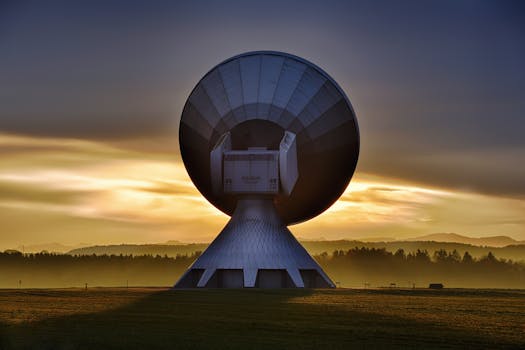
Satellite Telecommunications Technology has experienced significant growth and advancements in 2023. The year has seen major milestones achieved in the field, with several companies and organizations launching new satellite constellations, integrating 5G technology, and expanding satellite-based broadband services.
The development of satellite constellations has been a major focus area for satellite telecommunications technology in 2023. Companies such as SpaceX, Amazon, and OneWeb have launched numerous satellites into orbit, with the goal of providing global internet coverage and bridging the digital divide. These constellations have the potential to revolutionize the way we communicate, with faster and more reliable internet services being made available to people in remote and underserved areas.
Another significant development in satellite telecommunications technology in 2023 has been the integration of 5G technology. Several companies have begun testing and deploying 5G services via satellite, with the goal of providing faster and more reliable connectivity to users. This integration has the potential to enable a wide range of new use cases, including IoT, autonomous vehicles, and smart cities.
Satellite-based broadband services have also experienced significant growth in 2023. Companies such as Hughes Network Systems and Viasat have launched new satellite-based broadband services, providing users with faster and more reliable internet connectivity. These services have the potential to bridge the digital divide, providing people in remote and underserved areas with access to the internet and a wide range of online services.
In addition to these developments, 2023 has also seen significant advancements in satellite technology itself. New satellite designs and architectures have been developed, with a focus on increasing efficiency, reducing costs, and improving performance. These advancements have the potential to enable the development of more complex and sophisticated satellite systems, with a wide range of new applications and use cases.
Advancements in Satellite Technology
The year 2023 has seen significant advancements in satellite technology, with a focus on increasing efficiency, reducing costs, and improving performance. New satellite designs and architectures have been developed, with the goal of enabling the development of more complex and sophisticated satellite systems. These advancements have the potential to enable a wide range of new applications and use cases, including Earth observation, communications, and navigation.
One of the major advancements in satellite technology in 2023 has been the development of new propulsion systems. Traditional propulsion systems have been limited by their fuel efficiency and specific impulse, but new systems such as electric propulsion and advanced ion engines have the potential to significantly improve the efficiency and performance of satellites. These systems have the potential to enable satellites to operate for longer periods of time, with less fuel and fewer resources.
Another significant advancement in satellite technology in 2023 has been the development of new materials and manufacturing techniques. New materials such as carbon fiber and advanced composites have been developed, with the goal of reducing the weight and increasing the strength of satellites. These materials have the potential to enable the development of more complex and sophisticated satellite systems, with a wide range of new applications and use cases.
Challenges and Opportunities
Despite the significant advancements and milestones achieved in satellite telecommunications technology in 2023, there are still several challenges and opportunities that need to be addressed. One of the major challenges facing the industry is the issue of space debris, with thousands of pieces of junk and debris orbiting the Earth and posing a significant threat to operational satellites. This issue needs to be addressed through the development of new technologies and regulations, with the goal of reducing the amount of debris in orbit and preventing collisions.
Another significant challenge facing the industry is the issue of spectrum allocation and management. With the increasing demand for satellite services and the limited availability of spectrum, there is a need for more efficient and effective spectrum allocation and management. This can be achieved through the development of new technologies and regulations, with the goal of enabling the more efficient use of spectrum and reducing interference between different satellite systems.
In conclusion, 2023 has been a significant year for satellite telecommunications technology, with major milestones achieved in the development of satellite constellations, 5G integration, and satellite-based broadband services. The year has also seen significant advancements in satellite technology itself, with a focus on increasing efficiency, reducing costs, and improving performance. Despite the challenges and opportunities facing the industry, the future of satellite telecommunications technology looks bright, with a wide range of new applications and use cases on the horizon.





